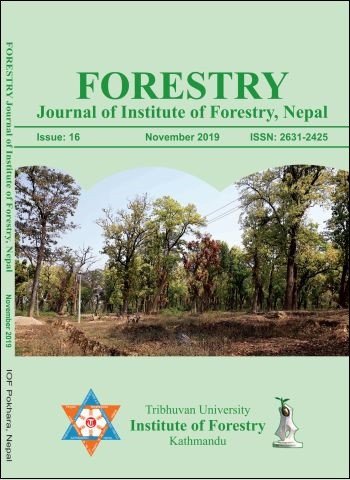An Assessment of the President Chure-Tarai Madhesh Conservation Development Program
DOI:
https://doi.org/10.3126/forestry.v16i0.28362Keywords:
Conservation program, river training, livelihood program, institutions, local bodyAbstract
Chure landscape is important and valuable because of its topography, geology, geo-morphology and climate. It provides several ecosystem services to the areas downstream, and also, has direct influence on the quality of the environment. The Government of Nepal (GoN) declared Chure landscape as Chure Environmental Protection Area in 2014, and also, formed President Chure-Tarai Madhesh Conservation Development Board (PCTMCDB) to look it separately. In the last four years, the government has entrusted to invest NRs. 6.15 billion in achieving the targeted objectives. This paper looks at whether the investment is worthwhile by assessing the effectiveness of the policies and programs in Chure landscape to achieve its target or goal. The information was gathered through consultative meetings, key informant interviews, focus group discussions and household surveys in the concentrated and distributive sites of river basin systems. The findings show that the formation of a separate body i.e., board and the designed programs, such as river training, soil and water conservation and livelihood support programs are highly relevant. However, the board has not been effective in holding the authority to implement the programs. The programs are being implemented in an ad hoc basis. Similarly, a blanket approach is not appropriate to implement the conservation and development programs due to different physiographic and variation in socio-economic conditions and resource use practices. There is a need of establishing an office with full legal authority along with integrated policy, and also, creation of an independent Chure conservation fund for its sustainability.
Downloads
Downloads
Published
How to Cite
Issue
Section
License
© Tribhuvan University, Institute of Forestry




